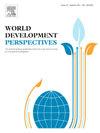“De” centralization of natural resources and environmental governance in Armenia
IF 2.3
Q2 DEVELOPMENT STUDIES
引用次数: 0
Abstract
Since the adoption of its 1995 Constitution, local self-governance has been central to Armenia’s democratic development. Yet, over the years, municipal governance has faced legitimacy challenges and low performance. In response, the central government amalgamated 915 local communities into 64, claiming that larger communities would have greater opportunities for natural resource conservation and benefit-sharing, thereby receiving additional means to address inefficiencies in public service delivery. Existing scholarship largely confirms the positive socio-economic outcomes of environmental decentralization. However, the literature highlights that the key to effective decentralization lies in a clear, transparent, and well-resourced transfer of responsibilities, rather than merely amalgamation reform. Against such background, this paper assesses the scope and the extent of environmental decentralization in Armenia and contemplates whether amalgamation reform, under the current scope of decentralization, increased local communities’ opportunities for environmental conservation and natural resources use. The findings suggest that environmental decentralization is happening to a limited extent in Armenia. Not only are local authorities granted a restricted scope of legal responsibilities, only 41 % of those responsibilities are implemented. Furthermore, the evidence suggests that amalgamation reform only affected the size of the communities but had no observable impact on improving environment conservation or resource utilization opportunities for local communities.
亚美尼亚自然资源和环境治理的“去”中心化
然而,多年来,市政治理面临合法性挑战和低绩效。作为回应,中央政府将915个地方社区合并为64个,声称更大的社区将有更大的机会保护自然资源和分享利益,从而获得更多的手段来解决公共服务提供效率低下的问题。现有的学术研究在很大程度上证实了环境权力下放的积极的社会经济结果。然而,文献强调,有效权力下放的关键在于明确、透明和资源充足的责任转移,而不仅仅是合并改革。在这样的背景下,本文评估了亚美尼亚环境权力下放的范围和程度,并考虑在目前的权力下放范围下,合并改革是否增加了当地社区环境保护和自然资源利用的机会。研究结果表明,在亚美尼亚,环境权力下放正在有限程度上发生。地方当局不仅被赋予有限范围的法律责任,而且这些责任只有41%得到执行。此外,证据表明,合并改革仅影响社区规模,而对改善当地社区的环境保护或资源利用机会没有明显的影响。
本文章由计算机程序翻译,如有差异,请以英文原文为准。
求助全文
约1分钟内获得全文
求助全文
来源期刊

World Development Perspectives
Social Sciences-Sociology and Political Science
CiteScore
4.50
自引率
0.00%
发文量
65
审稿时长
84 days
期刊介绍:
World Development Perspectives is a multi-disciplinary journal of international development. It seeks to explore ways of improving human well-being by examining the performance and impact of interventions designed to address issues related to: poverty alleviation, public health and malnutrition, agricultural production, natural resource governance, globalization and transnational processes, technological progress, gender and social discrimination, and participation in economic and political life. Above all, we are particularly interested in the role of historical, legal, social, economic, political, biophysical, and/or ecological contexts in shaping development processes and outcomes.
 求助内容:
求助内容: 应助结果提醒方式:
应助结果提醒方式:


